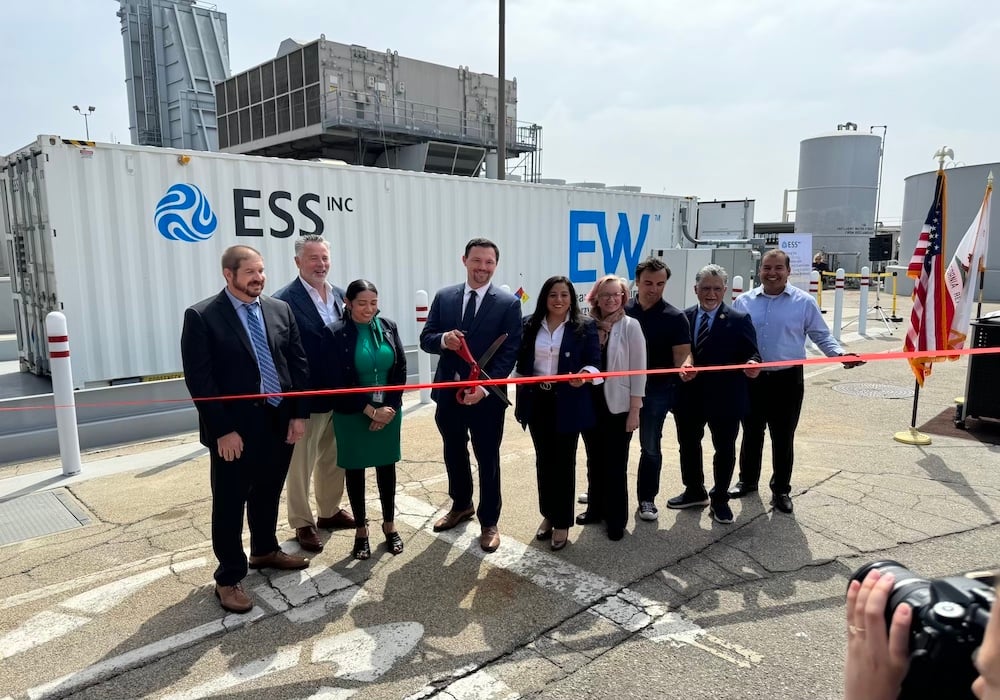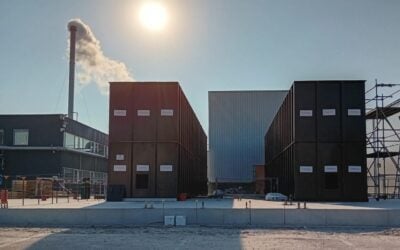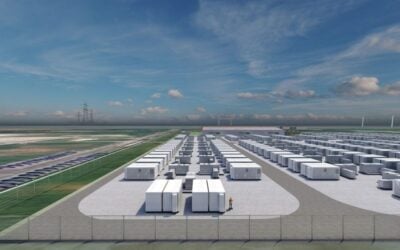
Flow battery energy storage manufacturer ESS Inc. could achieve profitability “in the next few years,” if its new product is a success, the company’s CFO has said.
The NYSE-listed US company, which manufactures and holds the IP for a flow battery technology based on iron and saltwater electrolyte, has just announced its Q1 2025 financial results for the period ending 31 March 2025.
ESS Tech Inc., to give its full name, only reported US$600,000 in revenue for the quarter, which came from deliveries of its Energy Center containerised battery energy storage system (BESS) to a customer in Florida, US.
Adjusted EBITDA loss was US$14.95 million, and net loss stood at US$18 million, with both metrics roughly the same as for the first quarter of 2024.
Try Premium for just $1
- Full premium access for the first month at only $1
- Converts to an annual rate after 30 days unless cancelled
- Cancel anytime during the trial period
Premium Benefits
- Expert industry analysis and interviews
- Digital access to PV Tech Power journal
- Exclusive event discounts
Or get the full Premium subscription right away
Or continue reading this article for free
The Wilsonville, Oregon-headquartered manufacturer signalled last year in a Form 10-Q filed with the US Securities and Exchange Commission (SEC) that its ability to continue as a going concern was in doubt.
Efforts to raise capital have been underway for some time, and in February, long-time CEO Eric Dresselhuys resigned as the company announced a change in strategic direction.
‘Significant emerging demand for non-lithium long-duration solutions’
The company is changing focus from its Energy Center and Energy Warehouse product range aimed at utility and commercial & industrial (C&I) applications toward Energy Base, with which ESS Inc. is targeting opportunities for long-duration energy storage (LDES) for data centres and large utility-scale renewable energy installations.
Interim CEO Kelly Goodman said revenues will remain at similar levels in Q2 and will come from project equipment and site preparation for customer orders for Energy Center and the larger Energy Warehouse product.
However, from the latter half of this year, ESS Inc. expects a ramp in revenues as production and customer demand for Energy Base start to solidify. Energy Center and Energy Warehouse appear to be discontinued from future marketing and sales, but the same core iron flow battery modules power the new Energy Base solution.
“This strategic shift is already yielding results,” Goodman said in an earnings call to explain results.
ESS Inc. has won a competitive solicitation from an Arizona public utility for a 5MW/50MWh (10-hour duration) Energy Base project. If contract negotiations conclude successfully in September, as anticipated, ESS Inc. will sign a power purchase agreement (PPA).
The tech company did not name the utility; however, given interim CEO Goodman’s description of it in the earnings call as an Arizona public utility with more than two million customers, including data centre hyperscalers, it is thought to be Salt River Project (SRP).
Goodman claimed the utility request for proposal (RfP) win was “representative of the significant emerging demand for non-lithium-ion longer duration storage technologies.”
Energy Base to become revenue generator in 2026
Company chief financial officer (CFO) Tony Robb said losses are expected to start narrowing from the US$15 million adjusted EBITDA loss recorded in the first quarter as Energy Base production and sales ramp up.
In addition to transferring core technology from the legacy products to the newer one, cost-outs achieved for Energy Center and Energy Warehouse will also “flow into the Energy Base,” Robb said.
ESS Inc. has established factories, which as of the end of 2022 had 800MWh annual production capacity, and the company has struck deals internationally, as well as in the US, including a 50MW/500MWh project with German utility LEAG in addition to a technology licensing deal in Australia. It has also signed partnership and investment agreements with Softbank and Honeywell.
ESS Inc. expects to start recognising Energy Base revenues from 2026, and in the meantime, is controlling spending to minimise cash burn, according to the CFO, and believes it has “a path to transition to EBITDA and cash flow positive in the next few years,” Robb claimed.
“The years of significant cost reduction in our Energy Warehouse and Energy Center are being leveraged into further capitalizing on our fundamental cost entitlement advantage, a product that delivers energy from iron, salt and water to compete head-to-head with lithium-ion in the coming years,” the CFO said.
At the close of trading on Friday (16 May), ESS Inc.’s average share price was US$2.14, down 98.57% from when they listed at US$150 in December 2020, and down 197% from their highest recorded price of US$281.25 in November 2021.





